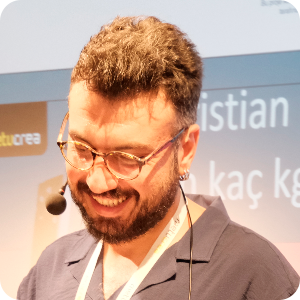Social media platforms have an impact on almost every aspect of our everyday lives. For organizations working in the development sector, the ‘big’ migration to online, with new communication tools and instruments, represented a massive change. Social media is an effective way for development agencies and organizations to promote their work to more diverse audiences, to gain instant feedback, to attract resources, and to raise awareness. At the same time, the transition from traditional outreach methods to innovative approaches has brought certain challenges, such as misinformation, more frequent reputational risks, and additional resources required to remain up to date with the evolving online landscape.
We asked communication experts to reflect on how social media is transforming advocacy work in the international development sector, the associated challenges and some of the successful online advocacy campaigns.
Key Takeaways:
- Social media platforms such as Facebook, Instagram, Twitter, and LinkedIn have billions of users worldwide and are used by international organizations to reach diverse audiences, including donors, policymakers, and beneficiaries.
- According to experts, social media is a powerful tool for raising awareness, mobilizing resources, and combating misinformation, particularly among the younger generation.
- Communication experts highlight these social media challenges for aid organisations: maintaining consistent and transparent messaging, combating online misinformation, and maintaining pace with the evolution of digital tools.
- #BringBackOurGirls is one of the online campaigns that proves how hashtags and viral movements can generate global media attention and influence government action.
DevelopmentAid: In what way has social media transformed advocacy campaigns in the international development sector, and what are some successful examples?

“Aid organizations had practiced traditional advocacy methods for years before realizing a much easier method (thanks to social media), digital advocacy campaigns. For an advocacy campaign, first you define your message to create awareness and influence behavior. Next, you choose strategic communication channels: an advertisement in a magazine, or maybe city light posters at bus stops. Your message will reach the audience easily in the spots that you rent for a few weeks. During this stage, you need to remember that you can reach tens of thousands of people in minutes on a social media platform. When it comes to reaching larger audiences with limited resources, you need to use social media as this is the only way to spend funds with maximum efficiency. Organizations’ annual strategic communication plans have already started to leverage digital advocacy campaigns. With the identification of themes that are consistent with discourse and messages of the project or organization, digital purchases and media choices have become important components in this regard. Moreover, social media encourages you to develop more focused content as digital campaigns take place over a certain period of time, with consistent discourses which are not used for other purposes. It can be flexible with regard to audience behavior or changing contexts as is evident in the nature of social media. All reactions, positive or negative, determine the next moves, and the digital world helps you to flex in line with changes in approach. Organizations can gain quick feedback on social media as it provides activity metrics. Such tracking is very important, since your campaign is for awareness so it should be visible and known. It is very important for the success of your campaign that you can track and interpret it correctly, so as to utilize your resources efficiently.
See also: Statistics to guide the social media strategy of NGOs

“Social media is pivotal in advancing international development goals, enabling organizations to amplify impact and foster global engagement. The platforms are also powerful tools for raising awareness, mobilizing resources, and combating misinformation, particularly among the younger generation. They have significantly transformed advocacy campaigns in the international development sector and our society by enhancing outreach, engagement, and impact. #BringBackOurGirls was a campaign that emerged in response to the kidnapping of over 200 schoolgirls in Nigeria by Boko Haram in 2014. The hashtag #BringBackOurGirls gained international attention, leading to widespread media coverage and increased government pressure to act.”
DevelopmentAid: What challenges do organizations face when using social media for development purposes, and how can these be addressed effectively?

“First, organizations need to be aware of the significance of the digital discourses they promote. Organizations’ social media behavior is fragile enough to be affected by changing national agendas, the mobility of social policies, and even the rhetoric of key actors, and the language, digital postures, and messaging of organizations often have to be adjusted accordingly. This can undermine perhaps the most important element of your organization: consistency. Second, Organizations must think ahead, having planned a series of actions which can be justified in the long run. They need to be transparent. This is tricky, and to monitor the effects of digital strategies, I suggest organizations revisit social media metrics. Numbers don’t lie. It’s hard for an organization’s approach to be insulated from outside influences, but its social media behavior is often under scrutiny, or will be as long as you think it is. This feeling can lead to mistakes. And here comes the third point: reactive social media management. At this point, you actually need a communication specialist. Check your resources and expand your team. Your metrics may need regular checks. It’s a challenge; why is your message so far behind when you are trying to be seen among thousands of posts? Was the number of followers a benchmark for your success? Ask yourself this.”

“Whilst the platforms have certainly enabled far greater outreach and awareness to the general population, that has not come without risk. The lack of verification of the identity of the parties on the platforms means that participants may not be genuine; indeed, they may be bad actors seeking to do harm. They may be individuals or state or non-state actors, or organizations. Without verification, it is difficult to engender trust in anything online. An example was the misinformation spread by individuals, so-called ‘influencers,’ on the safety of vaccines, even after they had been approved by the WTO and national authorities. A remedy to this is identity verification to gain trust. This could be addressed by using the platforms as channels to an organization’s secure website, which may then request verification of identity and create a database of participants. Thus, a trusted closed group may be created and managed by the organization.”

“The social media landscape has evolved, and the younger generation has moved to newer, shinier platforms like TikTok and Instagram. The challenge here isn’t just about platform selection; it’s also about understanding younger users’ unique preferences and behaviors. They are passive consumers and active participants who crave interaction and authenticity. So, to break through the noise, resonate with this elusive audience, and drive engagement and reach, it is vital to develop a targeted social media strategy that includes understanding your audience, creating high-quality and relevant content, and using paid promotions strategically to boost visibility. Engaging with followers through interactive content and conversations can also improve reach so strategic planning and thoughtful execution can help to address some challenges.”
As social media reshapes advocacy work in the international development sector, why not let technology help to facilitate the job search process? DevelopmentAid’s Individual Professional Membership is designed for professionals seeking to save time in the job search process and stand out from the competition. Members gain access to thousands of jobs in international development, tenders and grants for individuals, organizations and donor profiles, salary trends, organizations awards, thematic webinars and many more other useful benefits.

